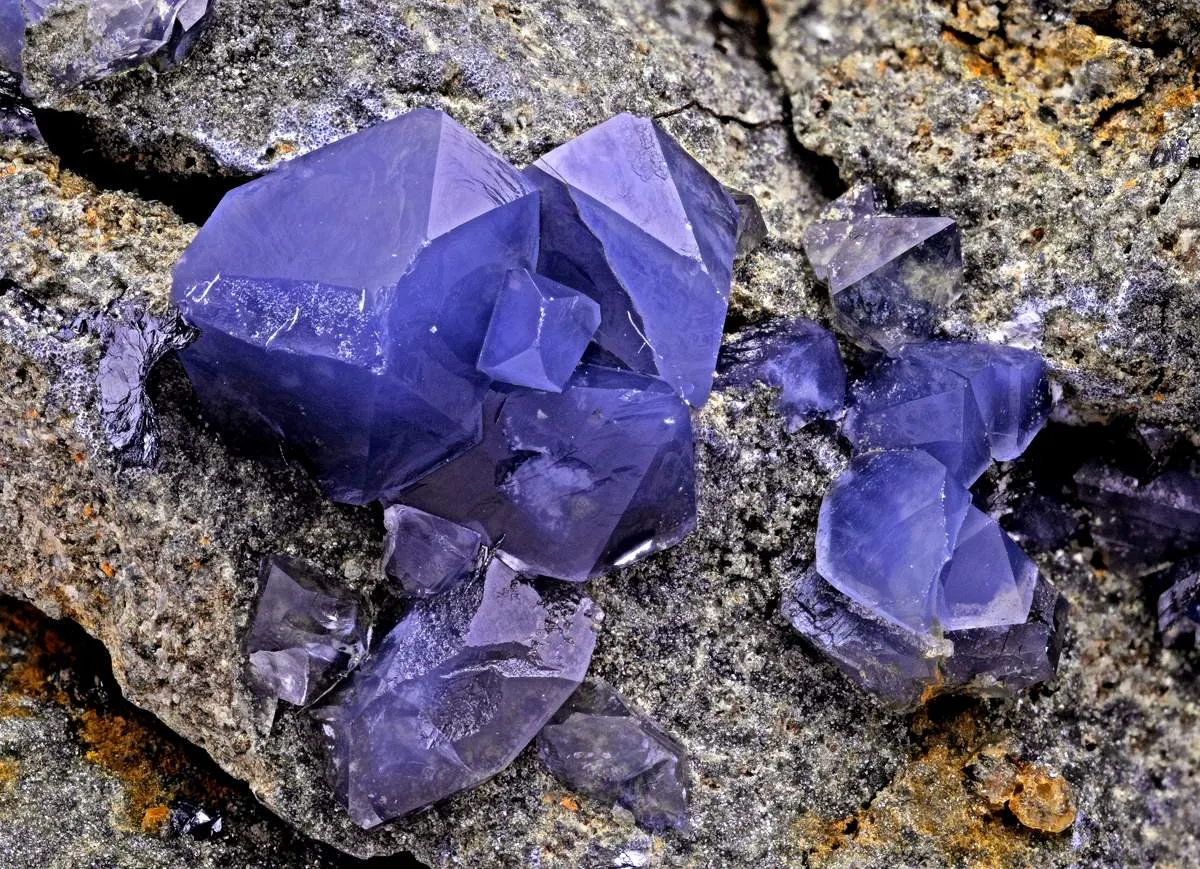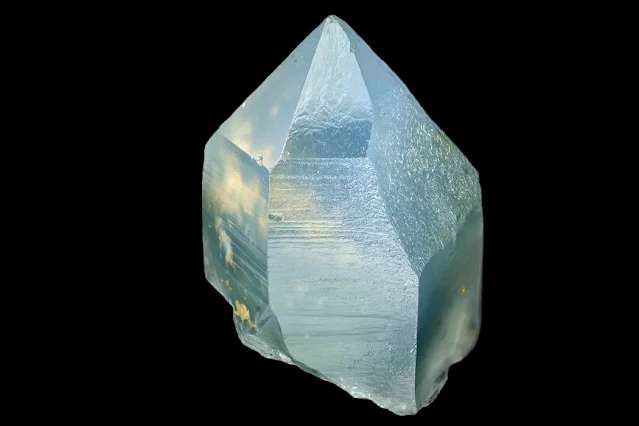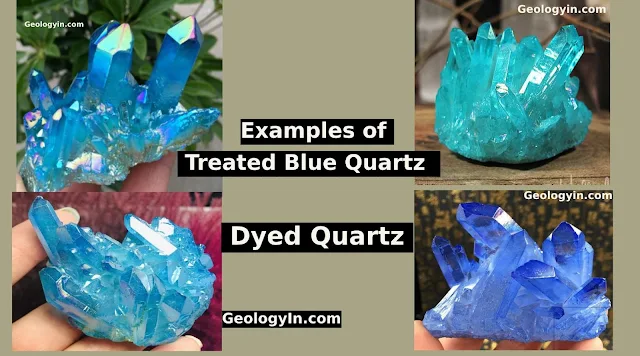Blue Quartz: Types, Properties, Occurrence
Blue quartz is a captivating variety of the mineral quartz, distinguished by its beautiful blue color. Derives its captivating blue color not from the quartz itself, but from microscopic inclusions of other minerals like magnesioriebeckite, crocidolite, or tourmaline.
Blue quartz can be opaque, translucent, or transparent, depending on the density and type of inclusions.
Blue Quartz Formation
Blue quartz typically forms in hydrothermal veins (mineral deposits formed by hot, mineral-rich fluids) or pegmatites (coarse-grained igneous rocks), where mineral-rich fluids deposit quartz and other minerals during periods of high heat and pressure.
Coloration
Inclusions: The most common cause of blue color is the presence of mineral inclusions like fibrous magnesioriebeckite or crocidolite (both amphibole minerals) or tourmaline. These minerals absorb specific wavelengths of light, leaving behind the blue color we perceive.
Rayleigh scattering: In some cases, microscopic inclusions can scatter light in a way that produces a blue color through a phenomenon known as Rayleigh scattering. This effect is similar to how the sky appears blue due to the scattering of sunlight by air molecules.
 |
| Blue Quartz from La Juanona Quarry, Antequera, Málaga, Andalusia, Spain Photo: C.P.Minerals |
Types of Blue quartz
Two main types exist:
Chatoyant Blue Quartz: Has needle-like inclusions of fibrous minerals like magnesioriebeckite or crocidolite, causing a shimmering or chatoyant effect in the light.
Milky Blue Quartz: Opaque due to finely dispersed inclusions, mainly rutile or dumortierite, scattering light and giving a milky blue appearance.
Blue Quartz Properties
- Translucency: Blue Quartz can be opaque or translucent depending on the density and distribution of inclusions.
- Luster: It exhibits a vitreous (glassy) luster.
- Refractive Index: The refractive index is slightly higher than pure quartz due to the inclusions, ranging from 1.54 to 1.55.
- Hardness of 7 on the Mohs scale (can scratch most other minerals).
- Crystal system: Trigonal
- Piezoelectric and pyroelectric properties (can generate electricity when pressure or heat is applied).
- Pleochroism: Due to the uneven distribution of inclusions, some blue quartz exhibits pleochroism, where the color appears to change depending on the viewing angle.
- Fluorescence: Can fluoresce with shortwave ultraviolet light, sometimes showing a blue-white or yellow-white color.
 |
| Blue Quartz from La Juanona Quarry, Antequera, Málaga, Andalusia, Spain Photo: C.P.Minerals |
Blue Quartz Occurrence
Blue quartz, a mesmerizing gem, is found in hidden pockets across the globe. Here are some key localities:
Blue Quartz Occurrence La Juanona Quarry, Spain: Deep blue gems of exceptional clarity, nestled in the Sierra del Torcal mountains.
Namibia: Sky-blue crocidolite inclusions near Otjiwarongo, or enchanting cat's eye varieties in the Erongo Mountains.
Madagascar: Soft, calming lavender or baby blue stones, often crafted into cabochons or carvings.
United States: Vibrant blue near Amelia Court House, Virginia, or subtler lavender hues near Mariposa, California.
Sri Lanka: Distinctive greenish blue quartz near Ratnapura, adding a touch of the exotic.
 |
| Blue Quartz - Taminser Calanda |
Treated Blue Quartz
Treated blue quartz refers to quartz gemstones that have undergone treatments to enhance their color or clarity.
Dyed blue quartz
This is the most affordable option, where the quartz is artificially colored using dyes or pigments.
Dyed blue quartz can have a wider range of vibrant and unnatural colors, often including blues, greens, and purples not found in natural stones.
However, the dyes can fade over time, especially with exposure to sunlight and heat, and may pose potential allergic reactions for some people.
Dyed quartz is significantly less valuable than natural or heat-treated versions.
Heat-treated blue quartz
This is the most common form, where the quartz is heated to high temperatures (around 400-800°C) to remove impurities and improve its color.
Heat treatment typically results in a lighter and more vibrant blue compared to natural blue quartz.
It's generally considered a safe and stable treatment that doesn't affect the stone's durability.
Value: Natural blue quartz is the most valuable, followed by heat-treated, then irradiated, and lastly dyed quartz. The price will reflect the treatment method used.
Read also:
Dumortierite Quartz: Rare Blue Quartz
Phantom Quartz
Ferruginous Quartz - Red Quartz










